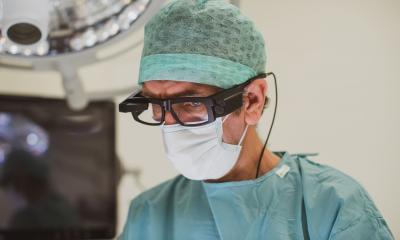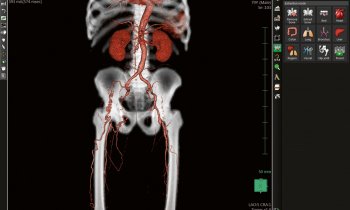Arthritis study
Researchers develop computer model to improve finger joint surgery
Clinicians and researchers in Southampton are leading a pioneering study into the use of computer-generated hand models to help improve the success of joint surgery for patients with arthritis.
Currently, surgery to replace the proximal interphalangeal (PIP) joint - the second joint in the finger from the finger tip - is not as reliable or predictable as surgery to replace the hip or knee. Although it usually reduces pain, the range of movement does not improve and, in some instances, the joint can dislocate, stiffen or wear out. "Our finger joints can naturally wear out with age and, although symptoms are often manageable, pain can become so troublesome that treatment is considered," said Professor David Warwick, a consultant hand surgeon at University Hospital Southampton NHS Foundation Trust (UHS) and study lead. "Initially, we can try one or two steroid injections and, if unsuccessful, surgery, which includes either stiffening the joint, known as fusion, or replacement using artificial spacers made of metal or plastic, is considered."
Now, however, Prof Warwick and consultant radiologist Dr Leonard King at UHS and engineering experts at the University of Southampton are using data taken from CT scans and MRI scans, together with motion-tracking technology, to build a precise computerised model of the PIP joint containing billions of pieces of information. The computational engineering team at the University of Southampton's faculty of engineering and the environment, which includes Dr Chris Phillips, Dr Alex Forrester and Dr Alex Dickinson, have applied sophisticated mathematical methods developed in aerospace engineering to correlate the data from the scans and the motion-capture.
As part of the study, funded by the Engineering and Physical Sciences Research Council (EPSRC), the team will also collect the same data of the PIP joint from patients with arthritis both before and after joint replacement. This will allow greater understanding of the effects of disease and how to improve the reliability and predictability of surgery.
Dr Cheryl Metcalf, a specialist in biomechanics at the University of Southampton's faculty of health sciences and part of the study team, said: "By using data from patients' existing MRI and CT scans to construct advanced computer models of the hand, we will be able to view the motion of the joint and how a simulated joint replacement will look before surgery. "This will give hand surgeons access to levels of specific and detailed information they have never had before."
Prof Warwick said: "Although most people are pleased with pain relief following surgery, their range of movement in the fingers does not improve and, in many cases, worsens - in which case the intervention is disappointing. "One of the main reasons for this is that when the joint is diseased, it is technically very difficult to get the artificial joint components to fit precisely with the ligaments and tendons which surround the joint and, to improve that, we need to obtain more information." He added: "Then we can design better surgical techniques and better joint replacements to help patients in the future, so we are extremely excited about the possibilities this work presents."
Source: University Hospital Southampton NHS Foundation Trust
30.05.2017











